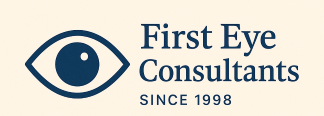Introduction
Unlike cataract, glaucoma does not announce itself. There is no pain. No redness. No early symptoms. Just a slow, relentless loss of peripheral vision — until one day, there is only darkness. In poor communities where regular eye checks are rare, glaucoma often goes undetected until it is too late. In this post, we’ll explore why this disease is so dangerous, how it affects the poor disproportionately, and what can be done to fight it.
What Is Glaucoma?
Glaucoma is a group of eye diseases that damage the optic nerve, often due to increased intraocular pressure. The most common forms include:
- Primary open-angle glaucoma (chronic, silent, progressive)
- Angle-closure glaucoma (sudden, painful, rapid vision loss)
- Congenital glaucoma (in babies and young children)
It leads to irreversible blindness — damage done cannot be undone.
Why Is Glaucoma So Common and So Dangerous in Poor Countries?
- Late presentation: Most patients seek help when central vision is already compromised
- Lack of screening tools: Tonometry, fundoscopy, and perimetry are rare in rural settings
- Poor compliance: Life-long daily eyedrops are expensive or unavailable
- Low awareness: Many have never heard of the disease until it’s too late
- Genetic predisposition: People of African descent are more prone to aggressive forms
In essence, glaucoma blinds the poor — not because it is unstoppable, but because it is invisible until advanced.
A Typical Case
A 54-year-old farmer is brought by his daughter. He bumps into people, complains of tunnel vision, and can’t find his way around the compound anymore. One look reveals pale optic nerves and rock-hard eyeballs. It’s glaucoma — but the damage is already done.
How Can It Be Diagnosed in Low-Resource Settings?
Even without fancy equipment, a trained health worker can:
- Take a good history (family history of blindness, bumping into objects, difficulty navigating at dusk)
- Use a torch and direct ophthalmoscope to assess the optic disc
- Perform digital palpation to estimate eye pressure
- Refer high-risk patients early for full evaluation
Simple tools + sharp clinical suspicion = sight saved.
Treatment Options
In poor countries, the biggest challenge is sustained treatment. Options include:
1. Eyedrops
- Often unaffordable or unavailable
- Poor adherence due to cost, side effects, forgetfulness
2. Surgery (Trabeculectomy)
- More cost-effective long term
- Good success in experienced hands
- Can be done with basic tools and local anesthesia
3. Laser (where available)
- Limited availability in rural settings
- Useful adjunct if infrastructure exists
What’s Needed to Fight Glaucoma in the Poor?
- Public education — especially in communities with high genetic risk
- Routine screening at primary or secondary care level
- Training general practitioners and nurses to spot warning signs
- Subsidizing drops and surgical kits for the underserved
- Patient follow-up systems (via community health workers or mobile phones)
A Hard Truth
Glaucoma is unforgiving. Once a patient goes blind from glaucoma, there is no second chance. This makes prevention and early detection essential, especially where surgical options are scarce and follow-up is weak.
Conclusion: A Battle of Time and Awareness
In the war against blindness, glaucoma is the stealthy enemy. But it can be outwitted — if we train our frontline workers, equip rural clinics, and spread awareness. Every patient who keeps their sight through early detection is a victory — for them, their family, and their future.

hello i love this
hiiiii